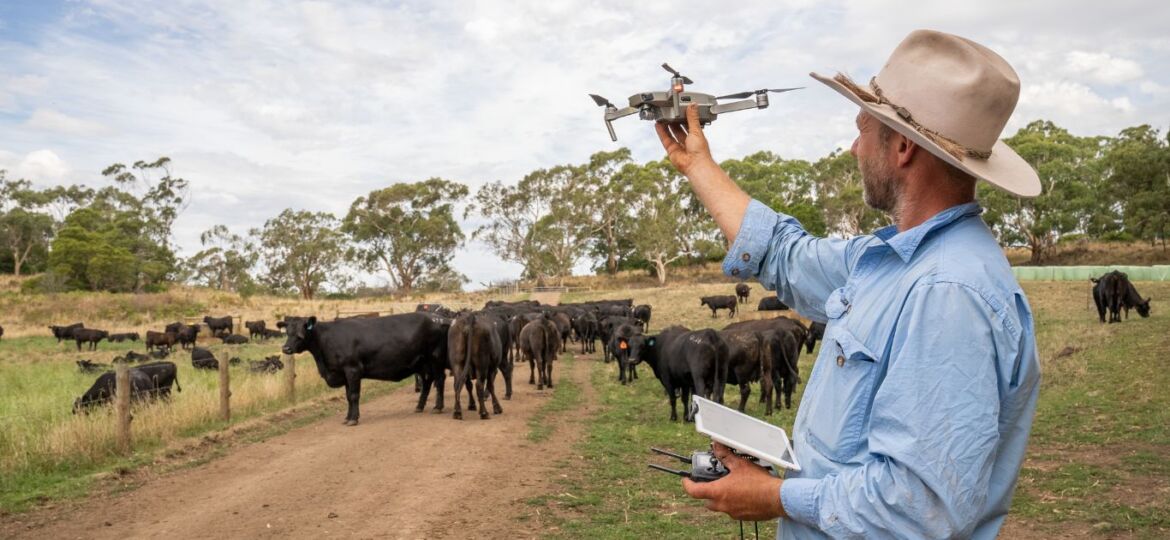
OPINION – Thomas Hall, Agtech and Logistics Hub Director
Drones are taking agriculture sky high, with forecasts the global market for drone technology in the sector will hit $8.4 billion by the end of 2028.
In Australia, a growing number of farmers are deploying drones to carry out seeding, spraying, soil analysis, irrigation management, livestock management, and mapping and surveying.
As with many sectors, drones – also known as Unmanned Aerial Vehicles (UAVs) – are becoming more commonplace as they help businesses save both money and time.
Agricultural drones come fitted with a range of sensors, inbuilt cameras and GPS that enable them to map farmland and collect data in real-time to empower farmers to make more informed decisions.
Farmers can operate the devices manually via remote control or use ones embedded with Artificial Intelligence (AI) to automate tasks that would otherwise be labour intensive or involve the use of expensive machinery.
Not surprisingly then, drones are a major driving force behind the rise in precision agriculture, which is essentially farmers using new technologies to increase production while reducing inputs such as fertiliser, water and herbicides.
We are already seeing how drones are revolutionising crop management and spraying, both jobs that have traditionally required the use of tractors, planes and helicopters. Farmers are saving money on chemicals as drone spraying is more precise, while also improving on-farm safety as they don’t have to fly aircraft.
Drones may also soon transform the way farmers muster livestock. The Agtech and Logistics Hub recently hosted a workshop with Luke Chaplain, who presented the results of recent drone mustering trials undertaken by his company SkyKelpie, Meat & Livestock Australia and the Department of Agriculture, Fisheries and Forestry.
The results have been encouraging, with drones shown to be an effective way of locating animals and moving herds.
Luke is also looking to address regulations to make the devices more user-friendly for livestock farmers with large operations.
In Australia, there are strict rules and regulations around the use of drones which means it’s extremely difficult for farmers to fly them out of their visual line of sight.
Other major barriers to adoption include the need for farmers to have a reliable internet connection and the skills needed to operate the devices.
Despite these challenges, a Deloitte report in 2020 estimated that one in 10 agribusinesses in Australia were using drones.
With agricultural drones becoming more affordable in recent years, the number has no doubt grown and is expected to take off as the capability and application of drones improve.
AI will further increase the capability of drones and there are reports that improved sensors and scanners are on the way. And when regulations make it easier for farmers to fly drones beyond their visual line of sight, they will be able to use the tech to perform even more jobs, particularly those on larger-scale operations.
The Deloitte report, commissioned by the federal government, found the use of drones in the agriculture, forestry and fishery industries could deliver savings of between $3.5 billion and $10.4 billion between 2020 and 2040.
The benefits that drones can deliver to farmers are huge – but I think I’ve droned on and on about it enough!
This piece was originally published in the January edition of Queensland Farmer Today




